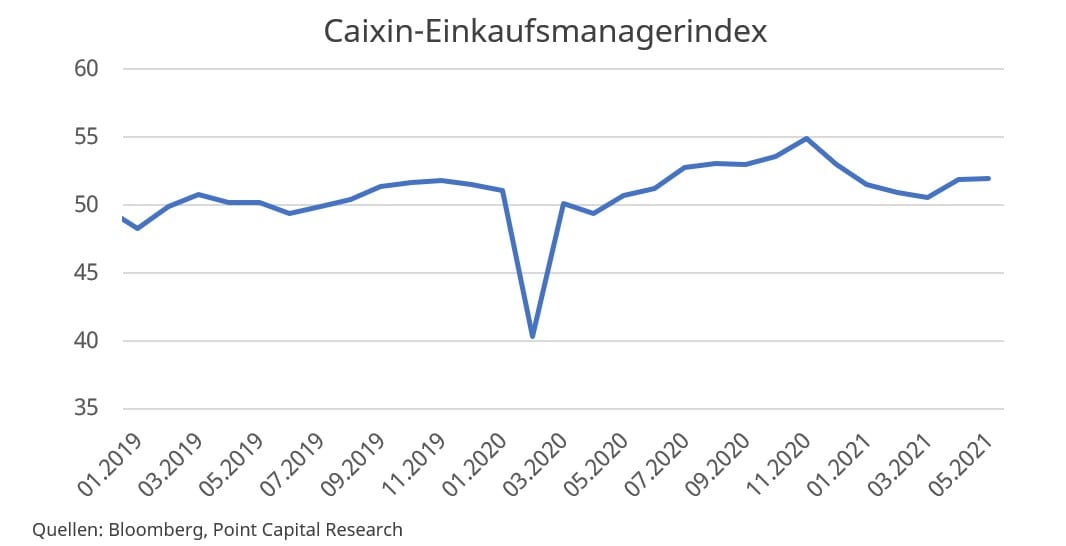In the second quarter, the US economy experienced the highest growth in the last 38 years, at least according to the latest estimate from the Atlanta branch of the US Federal Reserve. Was that it, or can the Americans go one better?
Clues to answer this question come from China. The purchasing managers’ index there, known as Caixin, generally runs three months ahead of the US purchasing managers’ index ISM. The Caixin has been declining since the beginning of this year, which could therefore be an indicator of a weakening ISM and thus an impending slowdown in US economic activity.

Credit growth in China
Another Chinese indicator also calls for caution. The so-called “credit impulse”, the rate of change in lending, has turned clearly negative. What does this mean for the global economy?

Long before anything is produced and raw materials are ordered, loans have to be taken out. And since China now consumes almost 50 percent of global production of many commodities, for example copper, this naturally has an impact on the prices of these commodities when demand from China falls. It is therefore possible that the decline in lending in China will lead to falling commodity prices and that the inflation hysteria, which has been fueled by the significant rise in commodity prices in recent months, will collapse again. The US economy, which is likely to slow down again in the coming quarters following the peak in the second quarter, could also have a dampening effect on the inflation rate and bond yields.
Conclusion: A slight tailwind is possible in the summer months
After peaking in the second quarter, the US economy could slow down somewhat in the summer. However, this negative influence on
From Thomas Gebert
Board of Directors of Point Capital Group
Stock market expert and multiple book author
10. June 2021
